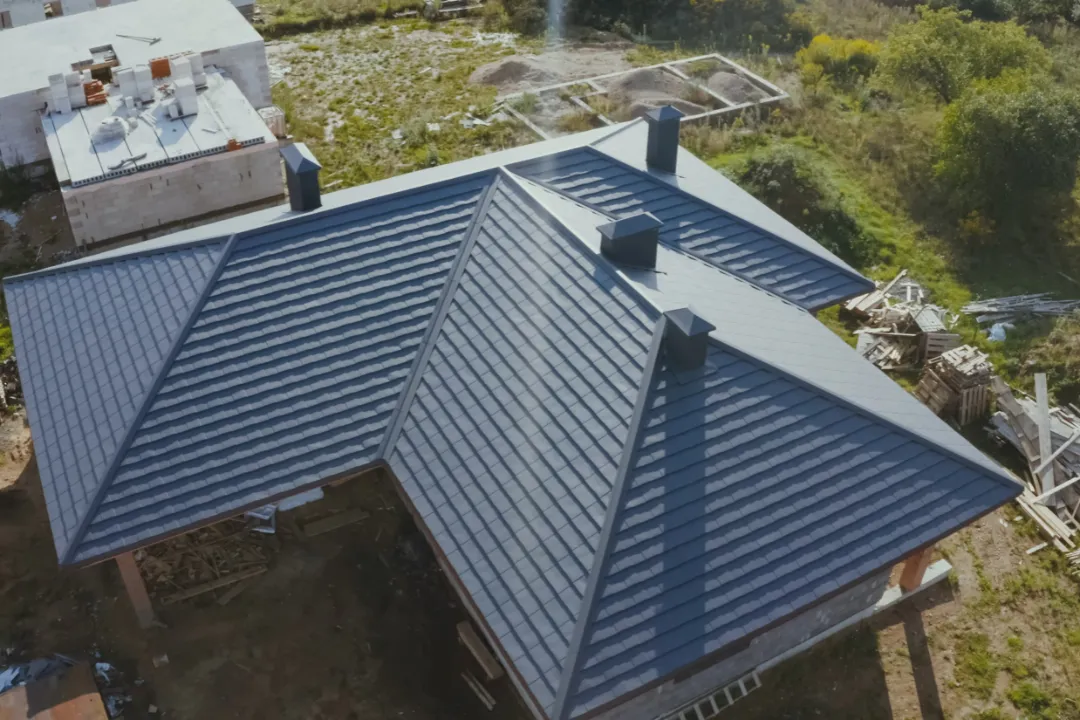ZEPHYRHILLS ROOFING BLOG
Take A Deep Dive Into Our Roofing Topics

Beyond Asphalt: Exploring Alternative Roofing Materials
When it comes to roofing materials, we often think of asphalt as the ultimate solution. But what if I told you there is a whole world of alternative options out there? From sleek metal roofs to elegant clay tiles, and even living roofs that bring nature right to your doorstep, the possibilities are endless. In this discussion, we will explore these unconventional choices and discover how they can transform not only the aesthetic appeal of your home but also its functionality and environmental impact. So, buckle up and get ready to embark on a journey through the vast realm of alternative roofing materials.
Metal Roofs
Metal roofs are a popular choice for homeowners due to their durability and longevity. When it comes to energy efficiency, metal roofs are an excellent option. These roofs are highly reflective, meaning they can reflect a significant amount of solar heat, keeping the house cooler in hot weather. This reflective property can help reduce the need for air conditioning and lower energy consumption, leading to cost savings. Additionally, metal roofs can be coated with special reflective coatings that further enhance their energy efficiency. These coatings help to reduce heat transfer into the house, keeping it more comfortable and reducing the load on cooling systems. Metal roofs are also known for their insulation properties. Many metal roofing systems have integrated insulation layers that help to keep the house warm in colder months, reducing the need for excessive heating. This insulation feature, combined with the reflective properties, makes metal roofs a great choice for homeowners looking to improve energy efficiency in their homes.
Clay Tiles
Often used in Mediterranean and Spanish-style architecture, clay tiles offer a unique and visually appealing alternative for roofing materials. Clay tiles have been used for centuries and are known for their durability and natural beauty. One of the major benefits of clay tiles is their ability to withstand extreme weather conditions, including high winds and heavy rain. They are also fire-resistant, which adds an extra layer of protection to the structure. Additionally, clay tiles have excellent thermal insulation properties, helping to keep the building cool in the summer and warm in the winter, reducing the need for excessive heating or cooling. Another advantage of clay tiles is their long lifespan, with some clay roofs lasting over 100 years with proper maintenance.
However, it is important to consider the drawbacks of clay tiles as well. One of the main concerns is their weight. Clay tiles can be heavy, and the roof structure may need to be reinforced to support the added load. Additionally, the installation process can be more labor-intensive and time-consuming compared to other roofing materials. Clay tiles also require regular maintenance to prevent moss or algae growth, as well as periodic inspections to check for any cracked or damaged tiles. Lastly, the cost of clay tiles can be higher compared to other roofing materials, making them a more expensive option upfront. Despite these drawbacks, clay tiles remain a popular choice for those seeking a durable and aesthetically pleasing roofing solution.
Slate Shingles
Moving on from clay tiles, another alternative roofing material to consider is slate shingles. Slate shingles are known for their durability and cost effectiveness, making them a popular choice among homeowners and builders alike. These shingles are made from natural slate, which is a type of metamorphic rock. This means that they are incredibly strong and can withstand harsh weather conditions, including heavy rain, strong winds, and even hail. In fact, slate shingles have been known to last for over a century with proper maintenance.
One of the advantages of slate shingles is the wide range of color options available. From traditional gray and black to more vibrant shades like green and red, there is something to suit every aesthetic preference. This allows homeowners to choose a color that complements their home's exterior and enhances its overall curb appeal.
In addition to their durability and aesthetic appeal, slate shingles are also cost effective in the long run. While the initial installation cost may be higher compared to other roofing materials, the lifespan of slate shingles means that they require minimal repairs and replacements over time. This can result in significant savings in maintenance costs.
Living Roofs
We can create a green oasis on our rooftops with the implementation of living roofs. Green roofs, also known as rooftop gardens, are becoming increasingly popular as a sustainable roofing option. These roofs are covered with a layer of vegetation, providing numerous benefits to both the environment and the building occupants.
One of the primary advantages of green roofs is their ability to improve air quality. The plants absorb carbon dioxide and release oxygen, reducing pollution and creating a healthier atmosphere. Additionally, green roofs act as natural insulation, reducing the need for heating and cooling, thereby decreasing energy consumption and costs.
Another benefit of living roofs is their ability to mitigate storm water runoff. The vegetation and soil on the rooftop can absorb and retain rainwater, preventing it from overwhelming the drainage system. This helps to reduce the risk of flooding and the strain on municipal sewer systems.
Furthermore, green roofs offer aesthetic and recreational benefits. They provide a pleasant view from above and create a peaceful and calming environment. Rooftop gardens can also be used as outdoor spaces for relaxation, social gatherings, and even urban farming.
Other Unconventional Options
One alternative option for roofing materials that should be considered is solar panels. Solar panels not only provide energy for your home but also serve as a protective layer for your roof. By harnessing the power of the sun, solar panels can generate electricity and reduce your reliance on traditional energy sources. Another benefit of solar panels is their long lifespan and low maintenance requirements. With advancements in technology, solar panels have become more affordable and efficient, making them a viable option for homeowners looking to go green.
In addition to solar panels, there are other unconventional options for roofing materials. One option is using recycled materials. By repurposing materials such as recycled metal or rubber, you not only reduce waste but also create an eco-friendly roof. These materials can be durable and provide excellent protection against the elements.
Another unconventional option is grass roofs, also known as green roofs. These roofs are covered with a layer of vegetation, providing insulation, reducing stormwater runoff, and improving air quality. Grass roofs can be aesthetically pleasing and create a natural habitat for birds and insects.
When exploring alternative roofing materials, considering options such as solar panels, recycled materials, and grass roofs can help you make an environmentally conscious choice for your home. It's essential to evaluate the benefits and drawbacks of each option to find the best fit for your needs.
Conclusion
In conclusion, there are a variety of alternative roofing materials available that go beyond traditional asphalt. Metal roofs, clay tiles, slate shingles, and living roofs offer unique and sustainable options for homeowners. These unconventional choices not only provide durability and longevity but also add aesthetic appeal to any building. By exploring these alternatives, we can create greener and more sustainable environments while also considering the long-term benefits for both our homes and the planet.
Connect With Us
© Copyright 2025 Zephyrhills Roofing. All Rights Reserved.
Terms & Conditions | Privacy Policy

